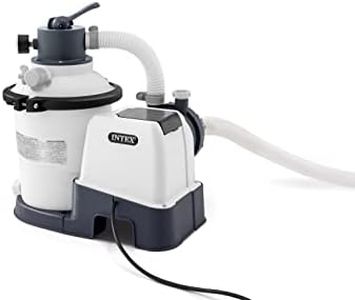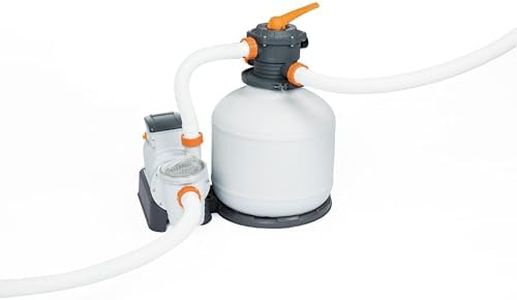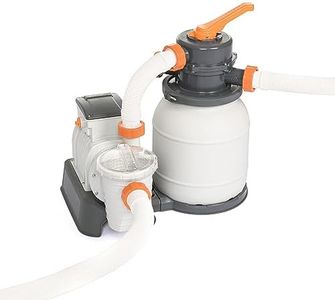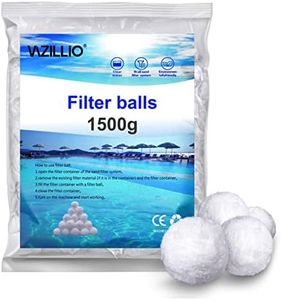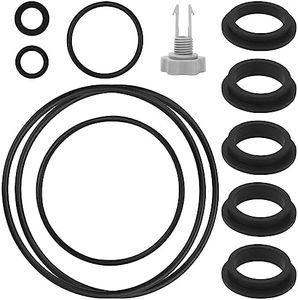We Use CookiesWe use cookies to enhance the security, performance,
functionality and for analytical and promotional activities. By continuing to browse this site you
are agreeing to our privacy policy
5 Best Pool Sand Filters
From leading brands and best sellers available on the web.By clicking on a link to a third party's website, log data is shared with that third party.
Buying Guide for the Best Pool Sand Filters
Choosing the right pool sand filter is essential for keeping your pool water clean, clear, and healthy. It's important to understand how different features impact filter performance and maintenance so you can select a filter that matches your pool size, frequency of use, and how much effort you want to put into upkeep. Focus on key specifications to ensure your filter provides efficient filtration without being oversized or undersized for your needs.Filter Size (Tank Diameter/Flow Rate)The size of a pool sand filter typically refers to the tank diameter and the flow rate it can handle, often measured in gallons per minute (GPM). This determines how much water the filter can efficiently clean at once. Choosing the proper size is crucial: a filter that's too small for your pool will struggle to keep water clear and may wear out quickly, while one that's too large can be unnecessarily bulky. Smaller pools (like spas or above ground pools) generally need lower flow rates, while large in-ground pools need a higher flow rate and larger tank. Always match the filter size to the pool’s volume and the pump’s power for optimal performance.
Micron Rating (Filtration Fineness)Micron rating indicates how fine the filter can trap particles. Sand filters usually remove particles down to about 20-40 microns in size. The lower the micron rating, the finer the filtration. This feature matters if you want very clear water, as lower micron ratings catch more tiny debris. For most residential pools, standard sand filtration is sufficient, but if you have lots of small debris or want especially crystal-clear water, consider models with lower micron ratings or upgrades like filter additives.
Sand CapacitySand capacity is the amount of sand the filter holds, often measured in pounds or kilograms. The sand acts as the filtering medium, and higher capacity generally means longer intervals between cleanings and better flow rates. However, it also means the filter itself is larger and heavier. Match sand capacity to the pool size—bigger pools need more sand to handle the workload, while smaller pools can get by with less.
Multiport Valve FeaturesThe multiport valve controls different functions of the sand filter, such as filtering, backwashing (cleaning the filter), rinsing, recirculating, and more. It’s important to have a valve that's easy to operate and fits your usual maintenance routine. Some models offer more settings or higher-quality seals for longer life. If you value easy operation and maintenance, look for a multiport valve with simple controls and clear markings.
Maintenance RequirementsSand filters require regular backwashing to clean out trapped dirt, and the sand itself usually needs to be replaced every 3-5 years. Some filters are easier to backwash and maintain than others, featuring clear sight glasses or user-friendly valves. If you want to minimize maintenance time, check for filters that highlight easy cleaning and sand changes. Consider your willingness and ability to perform regular upkeep when picking among models.
Durability and Material QualityThe materials used in the tank and parts can affect how long the sand filter lasts, especially if it’s exposed to sunlight or harsh chemicals. Look for tanks made from corrosion-resistant polymers or reinforced fiberglass if you want a long-lasting filter. If your pool is outdoors and exposed to weather, choosing a more durable construction will save headaches in the long run.
